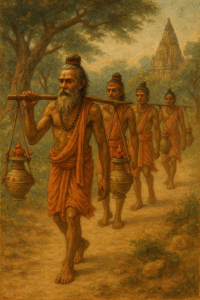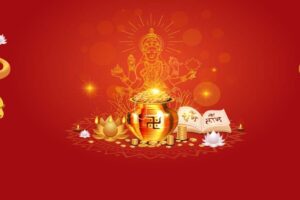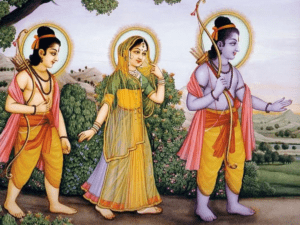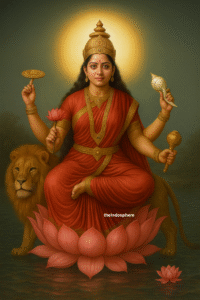Navratri is one of the most revered Hindu festivals, celebrated with devotion across India and beyond. During these nine sacred nights, devotees worship the nine divine forms of Maa Durga, each representing a distinct virtue and cosmic power. The first day is dedicated to Maa Shailaputri, regarded as the purest and most significant manifestation of the Goddess. She is worshipped as the daughter of the Himalayas and is venerated as the reincarnation of Sati the first consort of Lord Shiva.
Each of the nine forms of Maa Durga worshipped during Navratri is described in ancient scriptures such as the Puranas and the Upanishads, where their origins and divine significance are beautifully explained. In this article, we will learn about Maa Shailaputri, the divine form of the Goddess worshipped on the first day of Navratri, and reflect on the sacred stories and spiritual significance connected with her.
Who is Maa Shailaputri?
The first day of Navratri is dedicated to Maa Shailaputri, whose name means “daughter of the mountains” (Shaila – mountain, Putri – daughter). She is the daughter of Himavan, the King of the Himalayas, and is also revered by names such as Sati Bhavani, Hemavati, and Parvati. As the first and foremost form of Maa Durga, Shailaputri embodies strength, purity, and divine grace, guiding devotees on the beginning of their spiritual journey during Navratri.
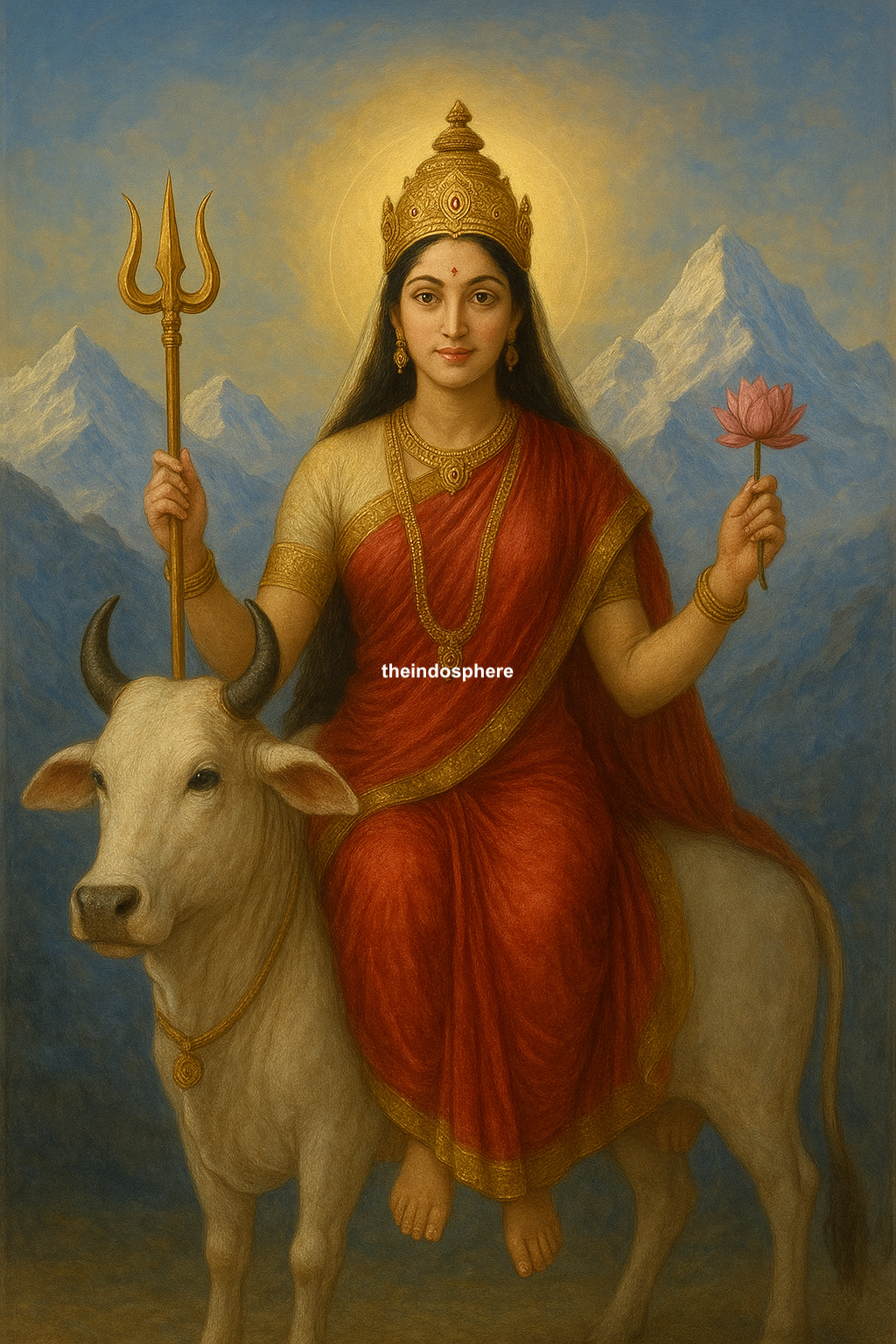
Iconography of Maa Shailaputri
Maa Shailaputri is portrayed as a radiant young goddess, seated gracefully upon a bull (Nandi), which symbolizes strength, patience, and righteousness. In her right hand, she carries a trident (Trishul), representing her command over the physical, mental, and spiritual planes. In her left hand, she holds a lotus, the eternal emblem of purity, beauty, and spiritual awakening. A crescent moon adorns her forehead, signifying calmness, divine energy, and eternal truth.
Attributes of Maa Shailaputri
Maa Shailaputri is adorned with powerful symbols that reflect her divine essence. The trident (Trishul) in her hand embodies supreme power and the destruction of evil, guiding devotees toward righteousness. The lotus she carries is the eternal symbol of purity, beauty, and spiritual awakening, reminding seekers to rise above worldly attachments. Her mount, the bull (Nandi), represents calmness, strength, and unwavering devotion, inspiring stability and righteous action in life.
Mantra of Maa Shailaputri
The sacred mantra dedicated to Maa Shailaputri is:
वन्दे वाञ्छितलाभाय चन्द्रार्धकृतशेखराम्।
वृषारूढां शूलधरां शैलपुत्रीं यशस्विनीम्॥
(Vande Vanchchitlabhaya Chandrardhakritashekharam,
Vrisharudham Shooldharaam Shailputrim Yashaswini)
This mantra envisions the Goddess as riding a bull, holding a trident in her right hand and a lotus in her left, with the crescent moon shining upon her forehead. She is the divine mother who blesses her devotees with success, prosperity, and good fortune. Chanting this mantra with devotion is believed to bestow long life, inner peace, and lasting happiness.
The Story of Maa Shailaputri
Maa Shailaputri is revered as the reincarnation of Sati, the daughter of King Daksha and the consort of Lord Shiva. ccording to the scriptures, King Daksha once organized a grand yagya (sacrificial ritual) but deliberately chose not to invite Shiva. Sati, yearning to attend her father’s ceremony, went against Shiva’s counsel and arrived uninvited. There, she was heartbroken when Daksha openly insulted her divine husband. Unable to bear the dishonor of Lord Shiva, Sati gave up her life by immolating herself in the sacred fire of the yagya.
Grief-stricken and enraged, Shiva destroyed the yagya and roamed the universe in sorrow. In time, Sati was reborn as Shailaputri, the daughter of the mighty Himalayas, King Himavan. From that moment, she came to be worshipped as the Goddess of the mountains, symbolising purity, devotion, and unshakable strength. (Read More)
Why is Maa Shailaputri Worshipped?
Maa Shailaputri is worshipped as the giver of worldly happiness, peace, and prosperity. Devotees believe that in homes where she is venerated with devotion, there will never be a shortage of food, wealth, or resources. As the first among the nine forms of Maa Durga, she holds a special place in Navratri worship, which is why the very first day of this sacred festival is dedicated to her.
An ancient temple of Maa Shailaputri in Varanasi, draws countless devotees, who believe that even a single glimpse of her idol can fulfill heartfelt wishes. Spiritually, she is also associated with the Moon, the celestial body that governs fortune and mental peace. Worshipping her is said to remove the malefic effects of the Moon and bring harmony, stability, and prosperity into one’s life.
How to Pray to Maa Shailaputri
Maa Shailaputri is believed to reside in the Muladhara Chakra (Root Chakra) of the human body, which represents stability and the foundation of spiritual growth. Awakening this chakra is considered the first step on the divine path leading to Lord Shiva. On the opening day of Navratri, devotees meditate upon this chakra, seeking inner strength and spiritual progress through her blessings.
The worship of Maa Shailaputri is performed with great devotion and purity. Devotees observe fasts and make offerings of white flowers, vermilion, and akshat (unbroken rice). Sweets prepared with pure ghee are offered as prasad, symbolizing devotion and gratitude. Her aarti is performed with heartfelt prayers, as devotees seek her divine grace for good health, prosperity, and protection from all negativity.
Blessings of Maa Shailaputri
According to Hindu mythology, chanting the Shailaputri Mantra regularly, especially on the first day of Navratri, is a powerful way to invoke the blessings of Maa Shailaputri. This practice helps eliminate negativity, bringing health, prosperity, and peace into one’s life. If you seek a deity to transform your fortune and wish for a blissful, prosperous life, Maa Shailaputri is the perfect goddess to worship.
By beginning Navratri with the worship of Maa Shailaputri, devotees awaken purity and strength within themselves, inviting her divine grace to bless their lives with harmony, abundance, and spiritual growth.


